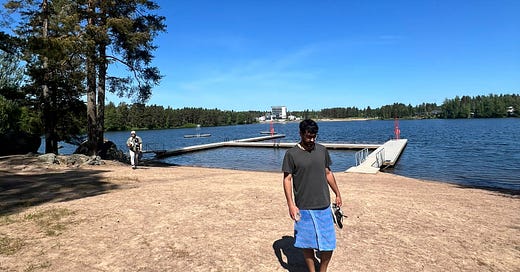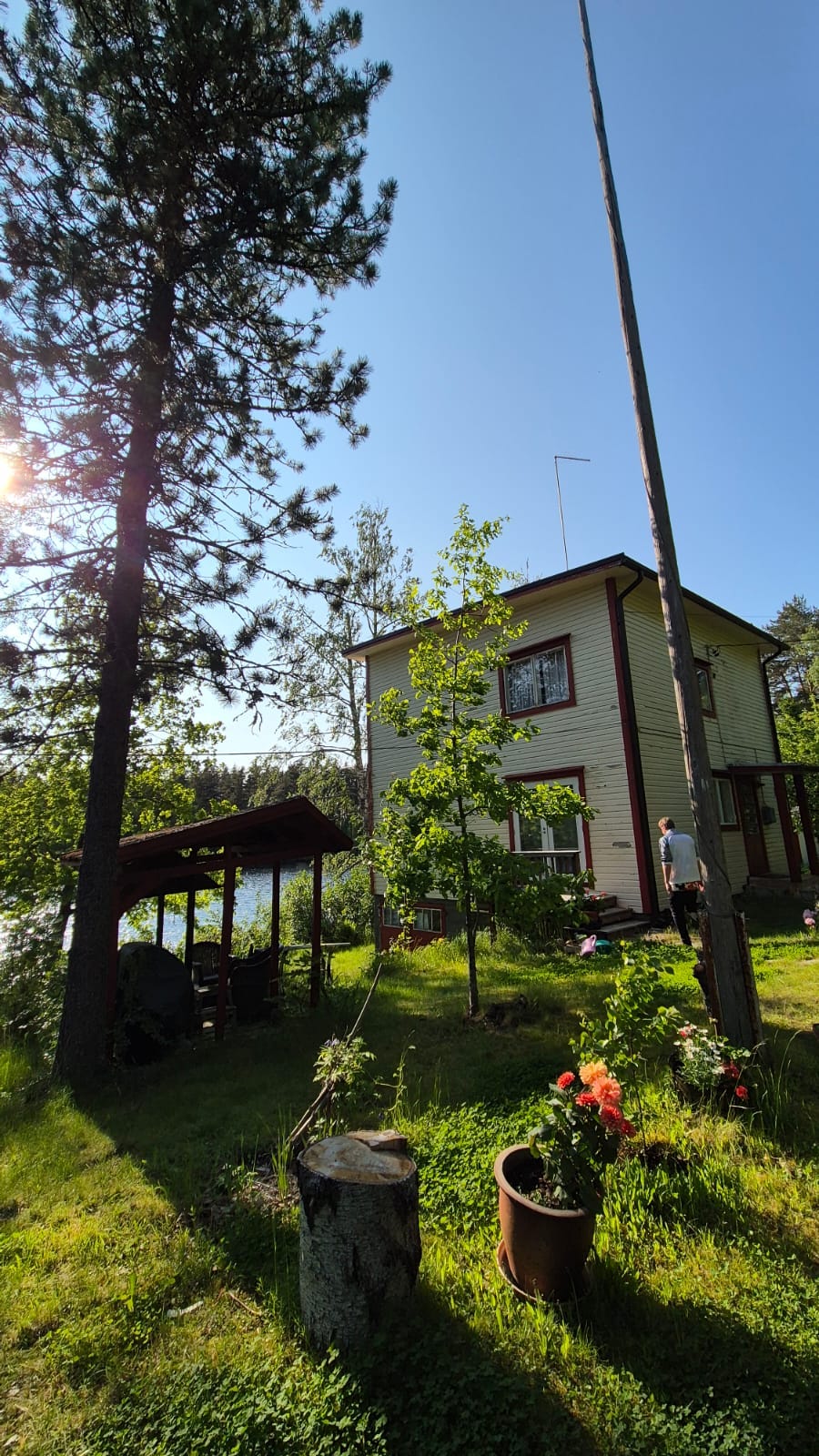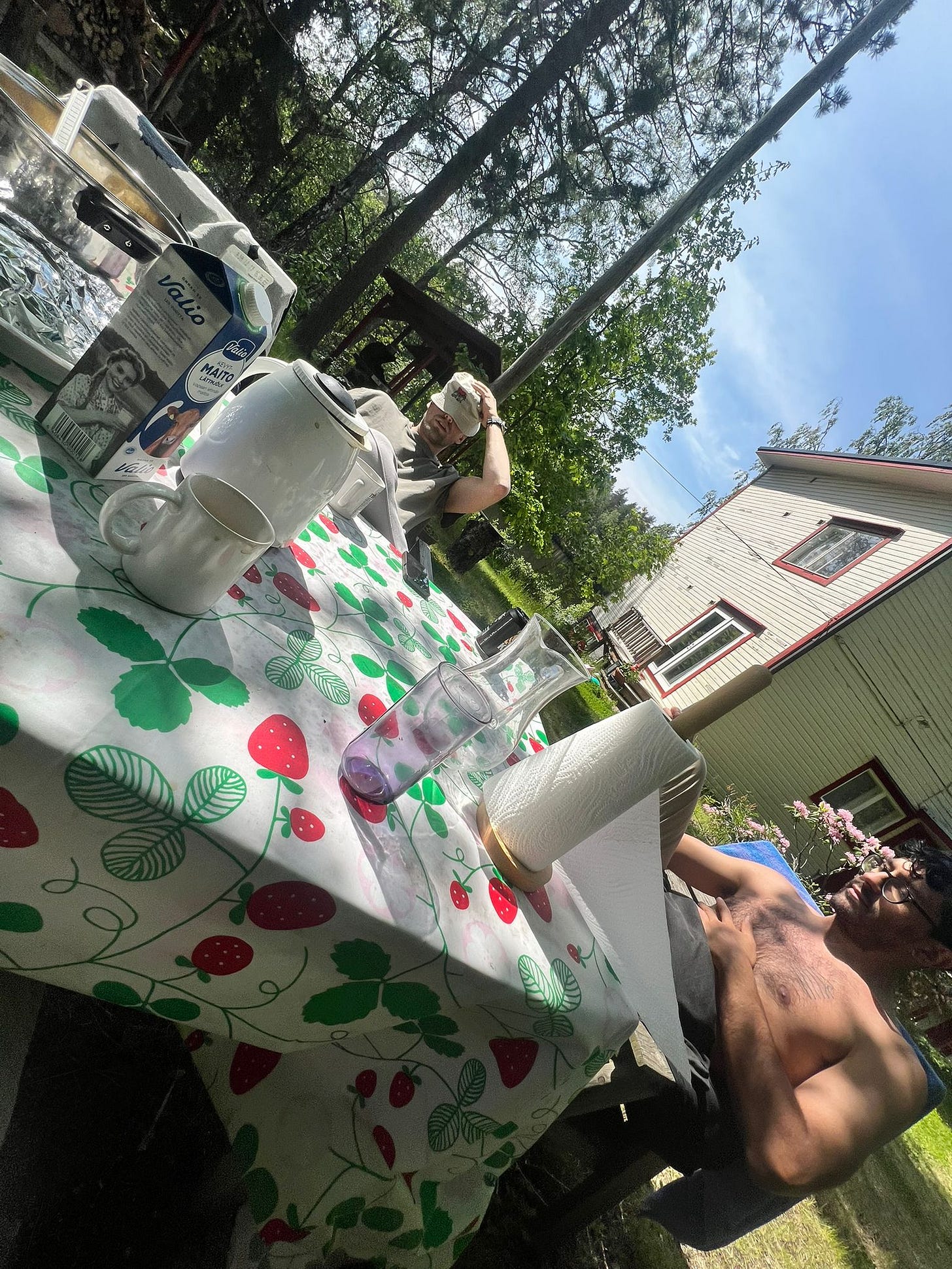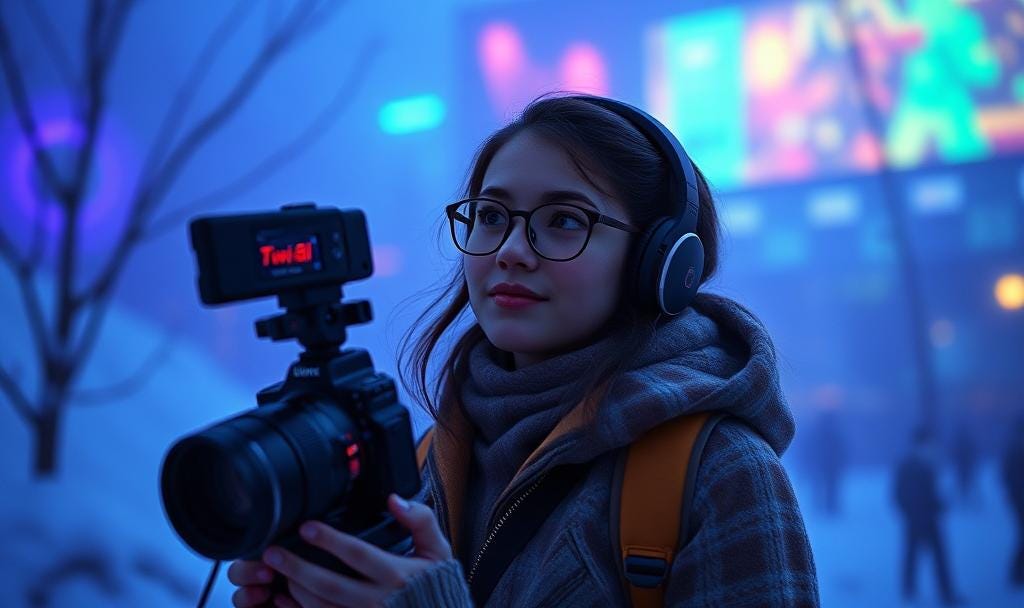The Offsite - Using AI for narrative design
We cover our discussions at our offsite, including the relevance of our venture, and an exercise of using AI in narrative design.
Hi, we’re StoryW°rld! Subscribe to explore the future of film with us. We’re a forward-looking community for filmmakers, writers, and creative leaders who are exploring innovation while preserving the art of storytelling.
In this edition of StoryW°rld's newsletter, we cover our offsite and a little exercise to help our community in narrative design! To read the entire post, you’ll need to get the Substack app
The Offsite
Unfortunately, Pauli was sick, so only Raul, Niki, and Pyry headed out to the offsite. The goal was to spend some time together, reflect on the goals achieved, and work together on plans. With a member of the team missing, we defaulted to hanging out, discussing what sort of working environment we want to create, and a creative exercise highlighted below.
The one-night stay, the first evening included dinner made by the team, sauna, and an early night for Raul & Niki, who were exhausted, while Pyry decided to watch the end of a Mission Impossible movie and a WW2 colorized documentary. Additionally, during the evening, we discussed childhood memories and tried to fix the broken coffee machine, which was an interesting intellectual challenge.

The next morning included a perfect omelette made by Raul, wood chopping (Raul wanted to try), and a nature walk to the local beach.
During the walk, we reflected on the different ways one can animate scenes with video tools these days. Wood chopping could easily be turned to Thor wielding his hammer, with the help of ComfyUI as demonstrated by Matthew Hallet’s post here. After Pyry challenged the others to a 100-m dash, we returned to the house for lunch.
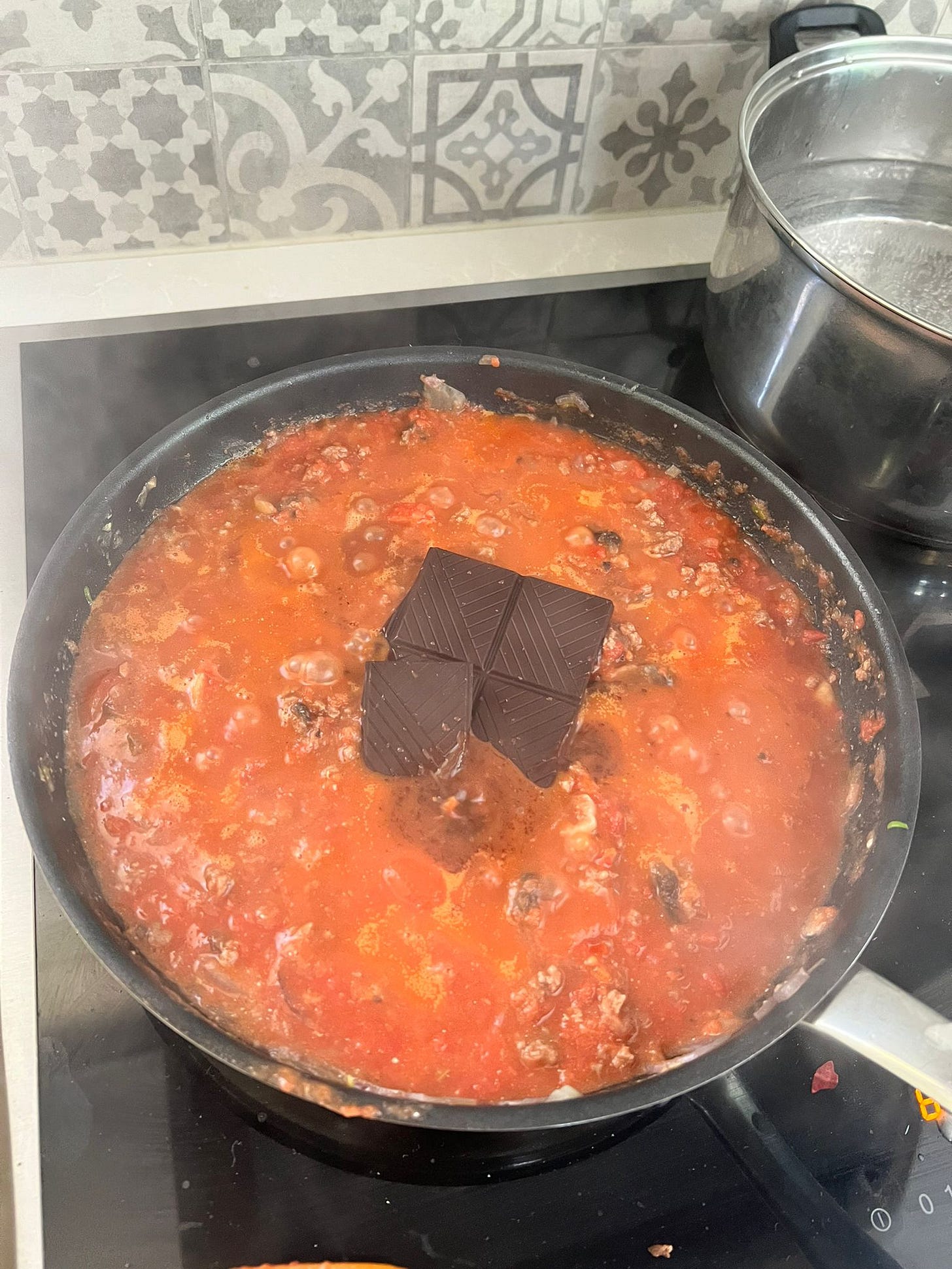
While eating, we discussed what sort of company we want to build and work for. Not a discussion you have often, but you want to have every once in a while, making sure you’re building something people can morally and ethically align with. Arguably social impact of any company can be measured with metrics provided by companies like the Upright Project, but the point is to involve everyone in these thoughts.
Our discussion can be summarized in the following points;
Our mission to build a future where there are tools that keep the human in the loop in creative endeavors is both motivating and inspiring. This mission ensures that the craft of storytelling is preserved, over a creative machine that treats stories as “a factory function.”
A company that truly acts in the interest of each individual’s personal growth, over the best interest of the company, is the only way to have people working for the company, put the company’s best interest over their own.
When it comes to employee engagement surveys and trying to measure how motivated a team is, these metrics usually fail to recognize that behind every number, there is an entire person.
The weekend included more thoughts like these, but in the interest of a summary, those deserve to be highlighted. An offsite functions as a place to have discussions like these, so that you don’t need to constantly have these questions nagging in the back of your head when you’re knee deep in execution.
What do you think? What would you like out of the company you work for?
However, to also spend time contributing to the problems of our customers, and not just our own, Pyry came up with the following exercise.
The Narrative design exercise
After sitting and discussing the type of company we would like to build and work for, we delved into a discussion of all the ways narrative design could be gamified. We considered how characters could be transformed into autonomous agents, in specific scenes, each with specific goals.
However, as we ventured into ideas that deviated from the core problems our customers face today, Pyry had us engage in an exercise of story and narrative design. In two minutes, without AI, we were tasked to come up with story ideas and choose one to present to the group. We shared our ideas and helped each other summarize them.
Niki wanted an idea that could resonate with a potential future user: a film-making student. A multilayered concept where the protagonist undergoes a hero’s journey, transcending as an artist in a world that largely dismisses “the old ways of making films.” The artistic key to the concept is to present the dilemmas of filmmaking in the age of AI from a multitude of different perspectives in a parodic way.
StoryWorld Stories #3: The Dumb Film Test
Hello reader! Welcome to Storyworld Stories! Here we share stories created by the storyworld team. Testing different models, processes, and workflows when creating stories in written format. Using Large and Small language models. Subscribe for updates, more stories, and tests!
Pyry approached his idea from his favorite theme, law-related thrillers, and an idea that touches on the fundamental belief of our company that there needs to be a human in the loop driving the creative endeavor for AI to be used responsibly in creative efforts. On a macroeconomic level, this ultimate fight will happen in one courtroom that will decide if AI companies developing foundation models can simultaneously act as media companies or not.
StoryWorld Story #2: The Last Speech
Hello reader! Welcome to Storyworld Stories! Here we share stories created by the storyworld team. Testing different models, processes, and workflows when creating stories in written format. Using Large and Small language models. Subscribe for updates, more stories, and tests!
Raul’s idea originated from his experience traveling to different cities in Europe, and how each city’s unique urban reputation would play into the struggles of each character. The choice highlights how personal experiences and tacit life knowledge powerfully play into story ideation.
After the session, we spent some time reflecting on the process and the feelings of interacting with AI on the task. The below is a Notebooklm summarization of our Below is a Notebooklm summary of our recorded discussion.
The key takeaway: It made all the difference in the world that the initial “idea” was generated without using AI for help, when it came to a sense of creative ownership. However, there might be a different process to use AI for idea generation & selection that would achieve the same, but was outside of the scope of the exercise.
It made all the difference in the world that the initial “idea” was generated without using AI for help
Briefing: AI as a Co-Writer for Film Concepts
This audio log captures the experiences of StoryWorlds’ three team members, Nicolas, Pyry, and Raul (referred to as "N" "P," and "R") experimenting with AI as a co-writer for developing movie concepts. Their approaches varied significantly, highlighting both the potential and current limitations of AI tools in creative ideation and structured narrative development.
Main Themes:
AI as a Co-Creative Partner vs. Structured Guide: The participants explored different modes of interaction with AI, from free-form brainstorming to highly structured frameworks (e.g., three-act structure, hero's journey). The effectiveness varied based on the user's clarity of vision and the AI's ability to provide appropriate, context-aware guidance.
User Experience and Interface Annoyances: A significant portion of the discussion centered on frustrations with the AI's conversational mode, particularly its tendency to interrupt or provide unhelpful information. The preferred interaction methods involved transcription and clear, structured prompting.
Context Management and Consistency: A recurring concern was the AI's ability to maintain context across multiple interactions and to ensure consistency of ideas, especially when the user's input evolved or conflicted with previous statements.
The "Hollow Story" vs. "Hollow Character" Dilemma: The participants debated whether to prioritize a strong overarching concept or deeply developed characters in their initial ideation, and how AI might best support either focus.
The Need for "Smart Agents" and Targeted Prompts: The discussion concluded with a vision for future AI tools that could act as specialized "agents," guiding users through specific stages of the creative process with tailored questions and structured feedback.
Most Important Ideas/Facts & Quotes:
1. Challenges with Conversational AI Modes:
Interruptions and Unsolicited Contributions: P experienced significant frustration with the AI's conversational mode: "Whenever you go silent for 3 seconds or longer, it kind of breaks in and starts to talk. But I didn't want it to talk yet. So there was already, like I don't know, three or four times that I got really frustrated, like why are you speaking already, like let me finish my thinking."
Lack of Structured Guidance: R found the AI in conversation mode was "not guiding me too much. So I had to try to remember things or try to give a lot of context all the time." They preferred a more structured questioning approach.
Conciseness of AI Responses: R noted that conversational AI answers are "pretty short because it's more expensive to answer like that than in text." This led to concerns about information compression and retention.
Information Overload (Questions): J's experience with the hero's journey framework resulted in "30 questions on a row that were numbered and then I got lost in the like how do I go to voice mode? How do I actually chop this in?" This highlights the need for user-friendly ways to manage detailed AI output.
2. Preferred Interaction Methods:
Transcription Mode: P found greater success using "transcription mode" to simply speak ideas, then having the AI summarize or process the text. This allowed for more user control over the flow of thought.
Structured Prompting for Specific Elements: P successfully used the AI to "flesh out my protagonist first" by describing their vision and then asking the AI to "describe this character." They repeated this for antagonists and sage characters.
User-Driven Iteration: All participants emphasized their role in selecting and discarding AI suggestions. P stated, "I took what I like I disregarded what I didn't like."
3. AI's Role in Idea Generation vs. Structure:
Idea Generation: AI was effective in proposing new ideas based on user input. P noted, "the AI actually gave me new ideas that some of which I took and enjoyed."
Premature Structural Advice: R found the AI "wanted to advance too quickly" and ask for characters before the core idea was fully formed. P also noted, "The AI was already trying to push me for like active structure and I said like, 'No, no, no. Let's not go there yet.'" This suggests that users prefer to dictate the pace of development.
AI for Overcoming Blocks: The AI's suggestion that "maybe the father does something" gave R the idea that "the car doesn't talk, but there are memories from the dad."
4. Context Control and Consistency Concerns:
Conflicting Context: N was "worried about conflicting context," specifically "how does it interpret the confliction in my new idea with the original thought in some other question?" This points to the challenge of maintaining narrative coherence in iterative AI interaction.
AI Adding Unprompted Information: P found it "a bit annoying" when "the AI started to add stuff that we hadn't talked about."
5. Output and Workflow:
Export Functionality: N highlighted a critical feature missing in most current AI models: "in gemini I was able to do everything and then in order to get a one pager treatment you can do export to docs which you can't do in chatGPT you can't do in on topic which makes it super super super powerful for anybody who use text editor." This seamless transition from AI output to editable document is highly valued.
6. The "Hollow" Story/Character Debate:
Character Depth vs. Story Layers: P initially focused on character development, recognizing that "I have two characters. I have the protagonist and the antagonist who are like who need to be really fleshed out for the story to work." N, conversely, focused on concept first, admitting their story "might actually be super hollow." This highlights different creative priorities and how AI could support them.
Role of Characters: P believed their characters had "a bigger importance," while R noted, "I have four characters So, do I have to go super deep in each one of them? Well, okay, I have the main flaw that they have."
7. Future Vision for AI Tools:
"Smart Agents" for Specific Stages: The participants envisioned specialized AI "agents" for different creative phases: "You need to even come up with the idea phase. So there might be a feature... That's another agent, another set of questions, another completely different goal that is more exploratory, more fun."
Guided Questioning: The ideal AI would ask "questions in the right order," like a professional co-writer, starting with core concepts before delving into details like character names. R wished the AI would ask, "What is the goal of the character? What would PI ask? What would a super pro movie maker ask?"
Consistency Checks: A crucial feature would be "crosscheck everything I say for consistency because that's the most important thing for me."
Visual Interface Preferences: P and N preferred visual interface elements for making choices and structuring ideas, suggesting that "structuring an idea where you need to make a choice in a visual format [is] much easier." R added, "the voice I felt like it was it wasn't helping me read the structure."
In summary, while AI demonstrated utility in brainstorming and summarization, its current conversational modes often hinder the creative process by interrupting, providing unrequested information, or lacking structured guidance. The ideal AI co-writer, as envisioned by the participants, would act as a highly specialized, context-aware "smart agent" that guides the user through the creative journey with timely, relevant questions, ensures consistency, and provides seamless output integration, while allowing the user to control the pace and direction of development.
What did you think of this exercise and its observations? What was interesting, and is there something we overlooked? Join the discussion on discord!
For more stories from StoryWorld, subscribe, and share this post with someone who’d value our insights!

